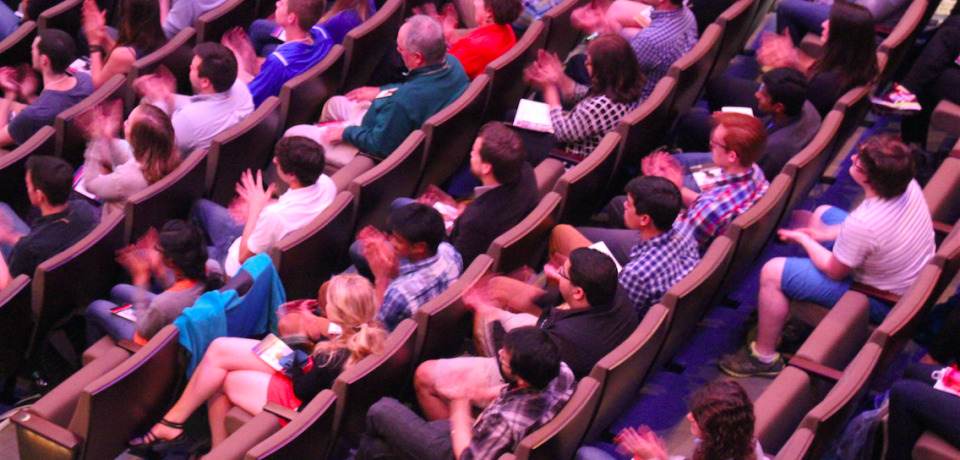After 8 months of giving workshops and conferences, we gathered a great amount of information on how to share knowledge efficiently. We identified 4 main principles to better engage your audience and help participants assimilate content more easily.
1. Show them why the thing you are teaching will be useful to them
When teaching something, might it be mathematics, chemistry, programming or any other subject it is important to always explain the purpose of what you are teaching. Showing real-life examples of what can be achieved with the concepts you are teaching will really help participants appreciate its value. When people don’t see the purpose of your explanation, their attention drops.
In many ways, teaching can be compared to selling. When selling something, you want to show all the amazing things you can (will be able to) do with it so that the person really wants to buy it. When teaching something, it’s the same. Show your participants how much better they will become after your training, tease their attention. Because in the end: “People don’t buy products, they buy better versions of themselves”.
2. For your audience to grab concepts faster, relate them as much as possible to what they already know
When explaining abstract or unfamiliar concepts, it is important to relate them as much as possible to what people already know. This comparison process will not only help your participants to grab the concept faster, it will also increase your audience’s engagement.
Let’s take an example, if you had to explain HTML and CSS to your mother, giving theoretical definitions probably wouldn’t make much sense to her. Instead, if you were to compare the two with known concepts such as the structure of a car and the painting, this comparison would allow her to relate a lot more on known examples to conceptualise the idea and understand it faster.
3. Adapt to your audience
When teaching a new programming language or a new tool, your first step will be to identify your audience. Who are you teaching to? How familiar is your audience with the concepts that you will be explaining?
Programming is based on logic. Even though languages have their discrepancies, it is easy to relate one language to another through some of their concepts. Although written differently, Ruby’s closure will be linked to JavaScript’s closure as will Python’s. Once the logic is understood, it becomes a lot easier for the person to grab all the new concepts.
If your audience’s level has discrepancies, try to smooth these out as much as possible. Should the level difference be too big, you might want to think about splitting your group in sub groups to avoid losing too much time explaining concepts that others already master.
4. To eat an elephant, slice it into smaller pieces
To make a goal appear more attainable, it is important to give your audience the impression that each step that will lead them towards the end goal is easily achievable.
Look at the example below. With this two-step process, it is highly probable that your participants will lose their initial motivation, the second step being way too complex compared to the first one.
Google Street didn’t start by saying “We’ll photograph each and every street in the world”. They started with a city, expanded to another, and another and so on until they finally reach a worldwide collection of photos.
By breaking down your end goal into small and achievable steps, you’ll accompany your participants towards the objective you want them to reach. With too big steps, you risk losing them along the way.
Conclusion
Applying those 4 simple principles to our conferences and workshops increased both our audience engagement and the learning process of our participants. On average, the feedbacks improved by 20% since we apply these techniques.
As strong believer in the learning by doing method at Philos, we’re sure there is still room for improvement. So don’t worry, if we stumble upon new principle, we’ll keep you posted! 😊
Have you tried these techniques yourself? What were your results? Do you have other techniques to share? If so, do not hesitate to list them below
Happy coding!












